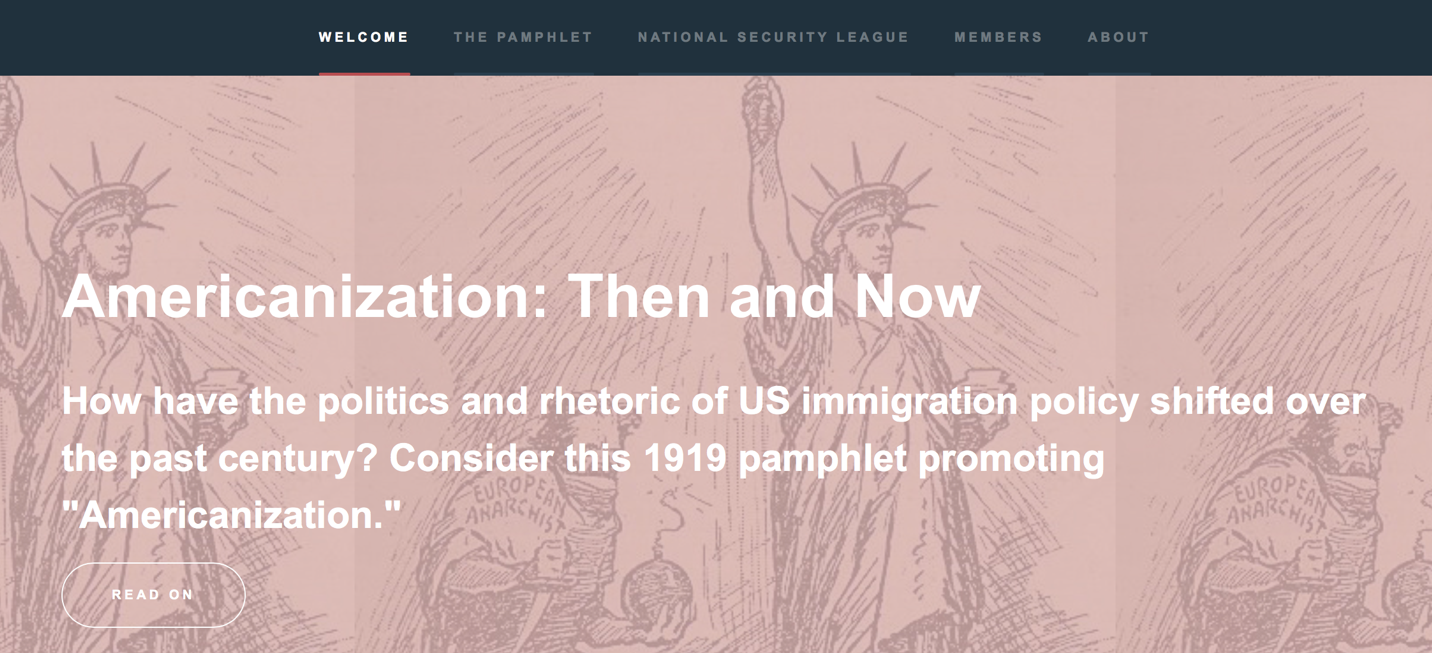Americanization: Then and Now
As tense as today’s immigration debate may feel, many historians rightfully note that it pales in comparison to the early 20th century, when federal government enacted legislation that imposed literacy tests, barred immigration from the Asia-Pacific, and created extensive physical, moral, and political categories for exclusion.
And yet, to evaluate how far (or not) we have come, we ought to measure progress not only in terms of policy, but considering the conditions in which policy is crafted. How have the politics and rhetoric of US immigration policy shifted over the past century?
To begin to tease out that question, I created Americanization: Then and Now to contextualize and close-read a piece of assimilation propaganda that circulated in the months after the First World War. The object of my case study, a pamphlet entitled "Americanization: What is It? -- What to Do," contains rhetorical features that might surprise contemporary readers.

While it was published during a period of widespread anti-immigrant sentiment, this pamphlet may sound unexpectedly respectful to contemporary readers. Various constituencies are counseled to "understand," "respect," and to recognize the shared humanity of immigrants. Young people are encouraged to, "Learn the names of the heroes, statesmen, artists, and musicians of immigrant races and look them up in biographies so that you may appreciate the traditions of the immigrant. Neighbors are asked to "Share the burdens, privations and self-sacrifice with them." And every American is challenged to "Win your way with our new American neighbors. Do not force yourself upon them. Help them to understand you while you try to understand them. Foster the trust of all and let them see in your fairness, sincerity and toleration." Parents are asked to instill in their children a "scorn of waste whether of material, effort, or energy." And American women—who receive a special address—are spurred to "Get together. America is a weak nation so long as class and racial lines prevail."
Of course, this pamphlet cannot be understood outside its historical, cultural, and political contexts, and Americanization: Then and Now considers the organization that produced it (the National Security League), the historical period in which it was authored (post-World War I isolationism), and the historical context during which it was distributed (the First Red Scare).

Intended for secondary and post-secondary classrooms, Americanization: Then and Now includes secondary sources and digital resources that a student or educator could use to begin their exploration of twentieth century U.S. immigration politics, the rhetoric of assimilation, and even the institutional history of the American Philosophical Society.
I hope you enjoy this digital exhibit, which would not be possible without the editorial support of David J. Gary, Charles B. Greifenstein, and Patrick Spero as well as the historical expertise of Adrienne Winans, Assistant Professor of History at Utah Valley University. Finally, I am indebted to Bayard L. Miller and Scott Ziegler, who translated my research whims into gorgeous digital exhibit available today.
